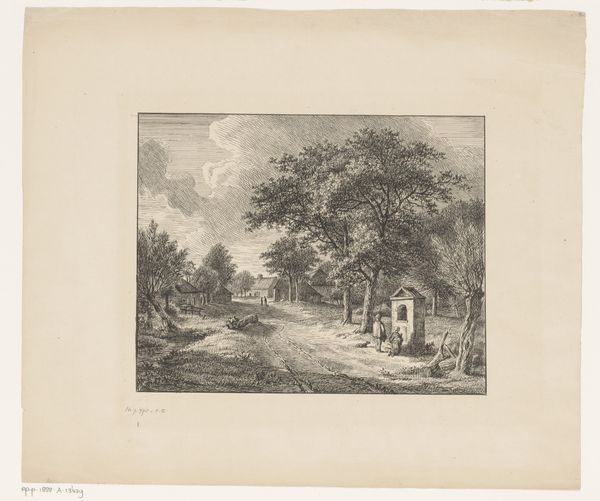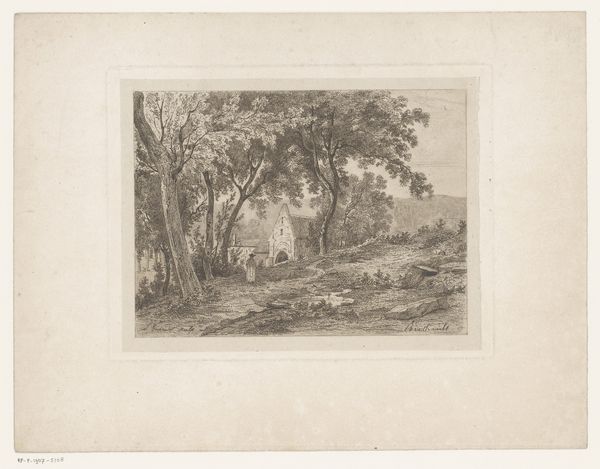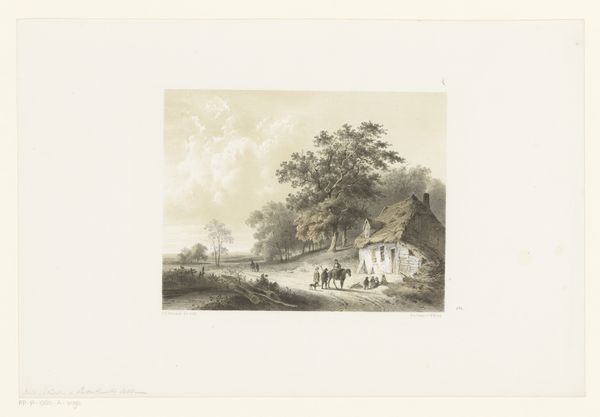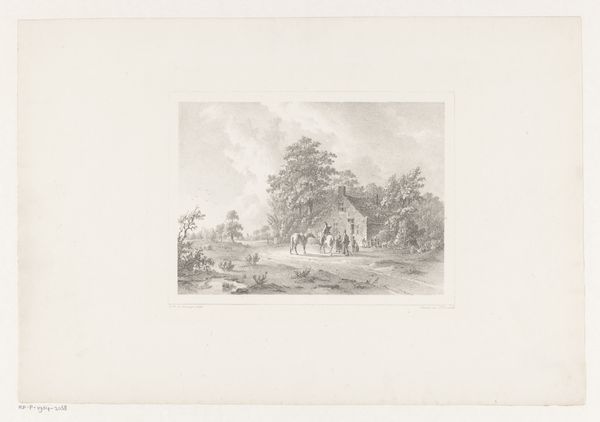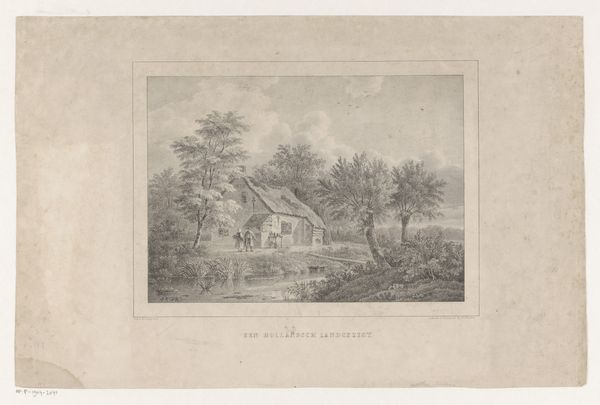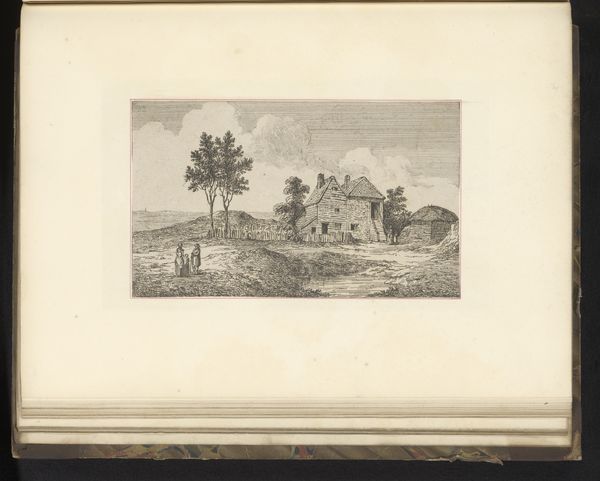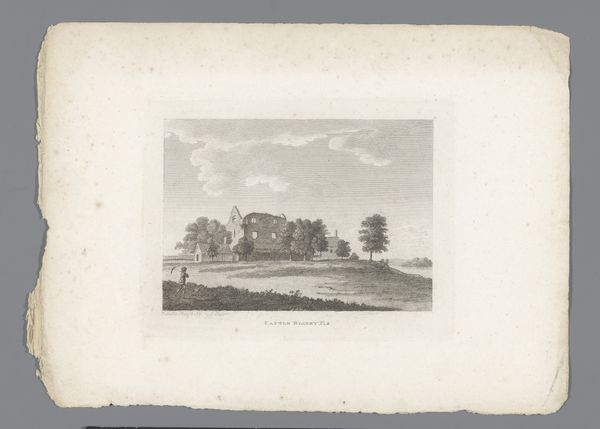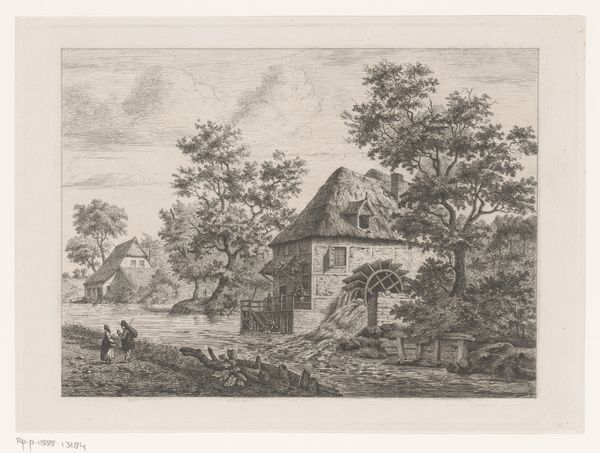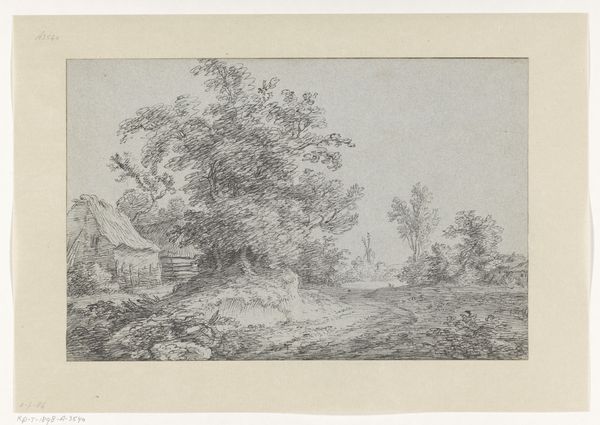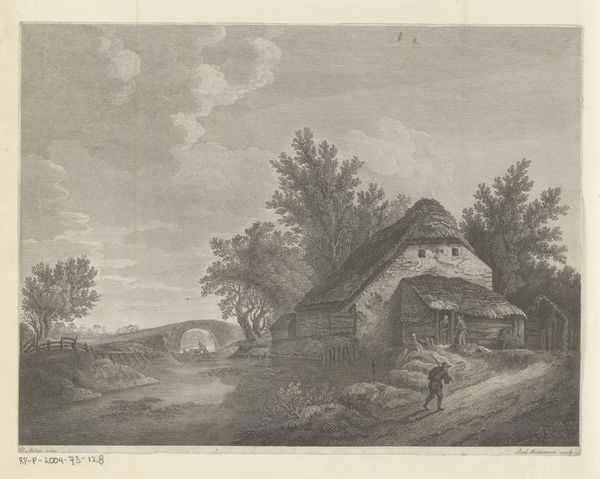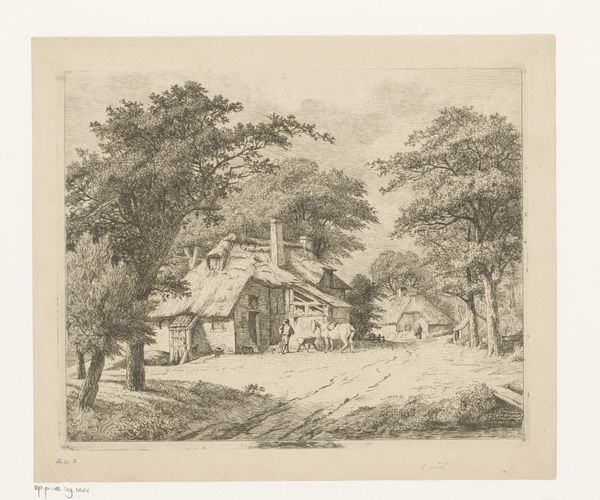
drawing, pencil, engraving
#
drawing
#
dutch-golden-age
#
landscape
#
romanticism
#
pencil
#
engraving
Dimensions: height 362 mm, width 542 mm
Copyright: Rijks Museum: Open Domain
Curator: We're looking at "Man op pad naast huis," or "Man on a Path Beside a House," a work created around 1828 by Andreas Schelfhout. It's currently held in the Rijksmuseum collection. Editor: My initial impression is one of quiet solitude. The rendering is detailed, almost photographic, in shades of grey; it’s a very hushed and subtle composition. Curator: Indeed. Let’s delve into the materials and process. It’s a drawing rendered with pencil and engraving techniques. Consider the physicality of this. Schelfhout likely started with delicate pencil sketches and built upon it using a printing plate for subtle tonal gradations. The layered labor is quite compelling. Editor: Precisely. The linear perspective guides our gaze across the landscape toward the man near the building, but the thatched roof cottage and tree feel solid in their placement. Structurally, Schelfhout's choices in composition serve to emphasize nature's order, with the house appearing almost organic to the earth that holds it. Curator: That relationship between built environment and landscape speaks to the evolving agricultural and working life of the time, how people fashioned raw materials to construct shelters that allowed new types of labor. I’m also thinking of the cottage and its components, likely sourced locally; that straw of the roof or the simple structure of walls, each an exercise of resource and labor to build from a collection of different parts. Editor: A material fact born of a romantic ideal. Observe, for example, the tonal contrasts that lend atmosphere—darkness in the eaves or under the tree, as set against the lightness in the open fields. Schelfhout orchestrates these values to imbue the landscape with a sense of longing and the sublime. The man’s dark figure provides depth while mirroring and almost matching the darker regions of the roofline itself. Curator: Perhaps the choice of engraving itself indicates the growing trend of production: printmaking enables distribution; how many other copies were created? To what audience were these marketed? Who labored over its making besides Schelfhout? The final drawing then exists only after its multiple copies reach other hands. Editor: Fascinating. Thank you for drawing attention to those qualities inherent in printmaking, which allow for its transmission, as well as to the materials and labor integral to understanding its nature. Curator: And to your insightful reading of its composition and expressive qualities.
Comments
No comments
Be the first to comment and join the conversation on the ultimate creative platform.
